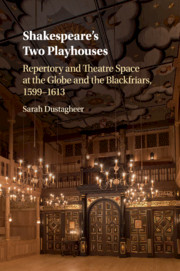 Shakespeare's Two Playhouses
Shakespeare's Two Playhouses Book contents
Bibliography
Published online by Cambridge University Press: 21 July 2017
- Type
- Chapter
- Information
- Shakespeare's Two PlayhousesRepertory and Theatre Space at the Globe and the Blackfriars, 1599–1613, pp. 200 - 219Publisher: Cambridge University PressPrint publication year: 2017


